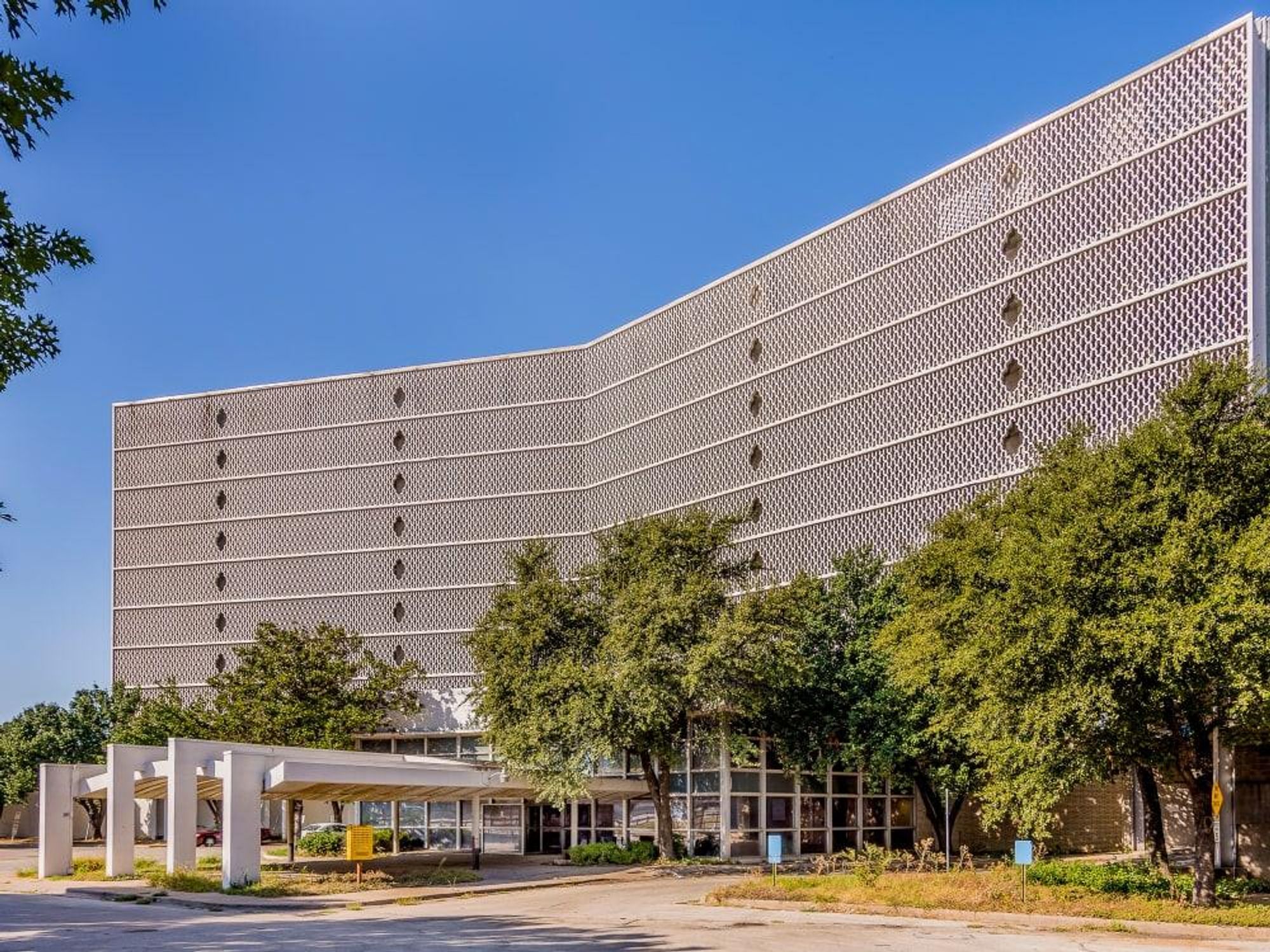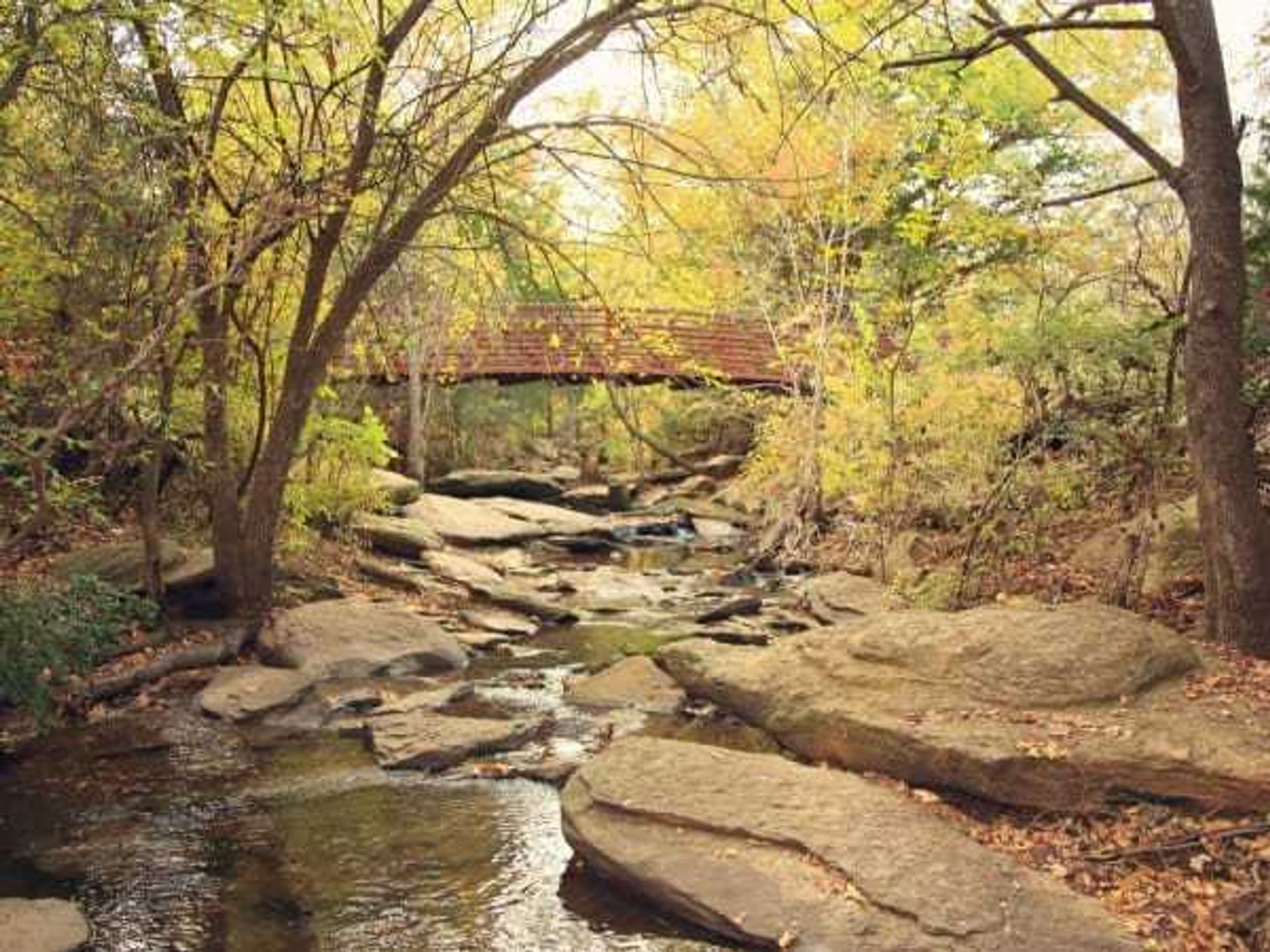Historical Buildings
Top 10 historical buildings that Preservation Dallas wants to save

With many historic buildings in Dallas having uncertain futures, Preservation Dallas has released its 2015 list of the Most Endangered Historic Places in Dallas.
"We hope this list of endangered properties makes the citizens of Dallas aware of how many important historic buildings are at risk of being lost forever. Preservation Dallas sees this list as an opportunity for all of us to be more thoughtful in how the city grows and develops," says Buddy Apple, Board President of Preservation Dallas, in a release.
The 2015 list of the Most Endangered Historic Places in Dallas includes:
Aldredge House, 5500 Swiss Ave.
Located in the city’s first residential historic district, the Aldredge House is one of architect Hal Thomson's most important works built in the French Eclectic style with elegant Renaissance detailing. Completed in 1917 for rancher William Lewis and wife Willie Newbury, it quickly passed to local banker George Aldredge and his wife Rena Munger in 1921. It stayed in the family until Rena donated it to the Dallas County Medical Society Alliance in 1974 to use as its headquarters. The nonprofit has taken up the mantle of preserving and maintaining Aldredge House, which even includes some of the original furnishings.
The house is one of the few properties in Dallas where the historic integrity has not been compromised and serves as an opportunity for visitors to step back in time. While the house is not threatened with demolition, it is threatened by the removal of its city permission to hold events at the house which allows the public access to one of the most wonderful historic interiors in Dallas and helps the nonprofit generate the funds necessary to maintain this historic gem.
Bianchi House, 4503 Reiger Ave.
This distinctive brick Mission Revival Style house was designed by Dallas architects Lang & Witchell in 1912 for Italian sculptor Didaco Bianchi and his wife Ida. The stunning interior plasterwork and pilasters, unique to this style, were designed and constructed by Bianchi himself. Significant piers support the massive and intricately carved mantelpiece, while its distinctive “Alamo”-style parapet adorns the front façade. The home received awards and accolades, including "House of the Future" at the 1936 Centennial Exposition, due to its advanced ventilation, plumbing, and electrical systems. It also has been listed on the National Register of Historic Places.
The house remained in the Bianchi family until 1979. Although there are permits issued for work on the house, the work has seemingly stopped and the house continues to deteriorate, with the roof now showing visible signs of deterioration.
Brink's Coffee Shop, 4505 Gaston Ave.
Designed by Paul & Paul Architects in 1964, Brink's is perhaps the city’s finest remaining example of Modern "Googie" style architecture. The building features two rear-sloping zig-zag slab roofs with walls formed of alternating sections of storefront and rubble stone masonry with sloping ends. This building was the first restaurant constructed for Norman Brinker and his first wife Maureen Connolly, both former US Olympians. The Brinkers went on to develop successful restaurants including Steak and Ale, Bennigan's, and Chili's.
The building is now vacant and boarded up. Unless this unique property is renovated and brought back to life, it will continue to deteriorate, or may eventually succumb to redevelopment pressure, leading to the erasing of a part of Dallas’ culinary and architectural history.
Cabana Hotel, 899 Stemmons Fwy.
Dallas reflects a bit of Las Vegas with the 1962 Cabana Hotel developed by Jay Sarno, who also developed Vegas properties Caesar’s Palace (1966) and Circus Circus (1968). This 10-story, 300-room hotel with its striking decorative concrete screen once welcomed famed guests, including The Beatles, Led Zeppelin, The Who, Jimi Hendrix, Richard Nixon, and Norman Mailer. Raquel Welch was a cocktail waitress here before being discovered. Many original features are intact, including tile-work, terrazzo, concrete screen-walls, curved signature walls, and unique concrete umbrellas on the terrace.
After the hotel ceased operation, it was converted to the Decker Jail, which is now closed. Dallas County is in the process of selling the building to a developer interested in demolishing this once hip, mid-century building tied to the cultural history of Dallas, for a new data center.
Dallas Independent School District schools, city wide
Historic schools in Dallas date form the early 1900s to the 1950s and were often designed by some of the most important architects in Dallas at the time, including Mark Lemmon and C.D. Hill. They were built to last and constructed of substantial materials with a high level of craftsmanship and unique design. Many wonderful historic schools in the DISD inventory have been well preserved such as Woodrow Wilson in East Dallas, Booker T. Washington downtown, and Sunset in Oak Cliff.
However, others are languishing or up for replacement in the upcoming bond election. One of those being considered for replacement is Rosemont Elementary at 719 N. Montclair Ave. in Oak Cliff. Completed in 1922, it has long been an anchor for the neighborhood and the building is still rated as "Good" in DISD's conditions inventory.
Forest Theater, 1914-1920 Martin Luther King Jr. Blvd.
The Forest Theater, with its distinctive neon emblazoned tower floating over the marquee, and the attached shopping center, opened in 1949 to serve middle-class white patrons in the area. The 1,500-seat theater was part of the Interstate Theatre chain and designed by H. F. Pettigrew of Pettigrew and Worley, who also designed the Lakewood and Circle Theaters. The Forest featured an unusual gently sweeping semi- circular ramp to the mezzanine and murals of tropical birds and flowers.
In 1956, the theater changed its patron focus to that of the middle-class African American families moving into the area and became the "Colored" Forest Theater. Due to sagging ticket sales, the theater closed in 1965. Since then it has been used for special events and performances. The theater and block of original commercial spaces are now up for sale and could be demolished to make way for new development, erasing a part of the African American history of the city and taking away one of Dallas' few remaining historic theaters.
Highland Park Independent School District schools: Bradfield Elementary School, 4300 Southern Ave.; University Park Elementary School, 3505 Amherst Ave.; and Hyer Elementary School, 3920 Caruth Blvd.
Three historic and architecturally significant schools in the Highland Park Independent School District are up for proposed replacement as part of this fall's bond election. The two cities of Highland Park and University Park do not have an established mechanism for protecting historic architecture. As a result, these three schools have been deemed inadequate to meet the needs of the growing school-aged population of the Park Cities.
Designed by Lang & Witchell, the 1925 Bradfield Elementary School and the 1928 University Park Elementary School feature identical plans, designed in the Spanish Revival style with added Rococo detailing. The tan, scratch-faced brick facades have monumental main entrances, decorated in typical Rococo Revival detailing, with elaborate curves, scrolls, shells, and shields adorned with fleurs-de-lis.
Hyer Elementary School, which opened in 1949, is an excellent example of Mark Lemmon’s historicist architecture and is styled in the Georgian Revival aesthetic. The main entrance features a classically-inspired pediment, supported by original cast iron columns with lace detailing. The façades feature decorative hexagonal windows and nine-over-nine double-hung windows with prominent central keystones in the decorative brick headers.
Preservation Dallas representatives have met with the HPISD administration to stress the importance of these historic schools. There are many options, including the targeted demolition of ancillary additions and the rehabilitation of original core structures, while adding on multi-level spaces to accommodate new, 21st-century educational programs.
Historic cemeteries in Dallas
Some of Dallas' historic cemeteries date back to the 1800s, including McAdams in Oak Cliff, McCree in Lake Highlands, and Pioneer in downtown. These cemeteries include examples of early stone grave makers with exquisite design and symbolism. Over the years, many have suffered vandalism, deterioration, storm damage, and improper upkeep of the markers.
Thanks to a grant from the B.B. Owen Trust, Preservation Dallas is currently working to restore and preserve McCree Cemetery. Historic cemeteries often have limited resources for care and maintenance with many markers lost in overgrowth or toppled to the ground.
Low-rise historic downtown buildings
Smaller historic buildings downtown, 2 to 4 stories in height, are rapidly vanishing due to development pressure, with four between Elm and Main Streets demolished for new development just last year. These smaller historic buildings often date to the early 1900s when Dallas was developing as a commercial center. They are tied to the retail and commercial history of the city and those that remain are often not protected by City of Dallas Landmark status.
One example is Milliner’s Supply Company Building located at 911 Elm St. This circa-1880 historic building is one of the oldest surviving in the central business district. Milliner’s Supply, a wholesale/retail business for hats, moved into the building in 1925. This property is currently for sale and is not protected. It is in a location downtown that is ripe for redevelopment with the potential to be replaced by a much larger and taller building allowed by zoning. These low-rise historic buildings give a human scale to downtown, present opportunities for business ventures not possible in larger, more expensive buildings, and are tangible reminders of Dallas’ early commercial history.
Salvation Army building, 6500 Harry Hines Blvd.
Originally home to the Great Northern Life Insurance Company this office building, completed in 1963, is an outstanding example of the 1960’s garden style office complexes which sprang up around Dallas. Designed by Grayson Gill, it has a unique projecting screen of diamond shaped panels giving the building a distinctive look in contrast to the very flat, clean lines of earlier 1950s office building architecture.
The Salvation Army now uses it for offices, although the building is currently for sale. The expansion and growth of medical facilities near the building raises the threat that this mid-century gem could be razed for new development.

 Cafe Dior was a hard-to-get reservation when it opened in Dallas. SevenRooms
Cafe Dior was a hard-to-get reservation when it opened in Dallas. SevenRooms  The School for the Talented and Gifted in Dallas ISD is the 9th best high school in the country, and the top high school in Texas. tagmagnet.dallasisd.org/
The School for the Talented and Gifted in Dallas ISD is the 9th best high school in the country, and the top high school in Texas. tagmagnet.dallasisd.org/  Dallas Caramel Company founder Rain McDermott Courtesy
Dallas Caramel Company founder Rain McDermott Courtesy